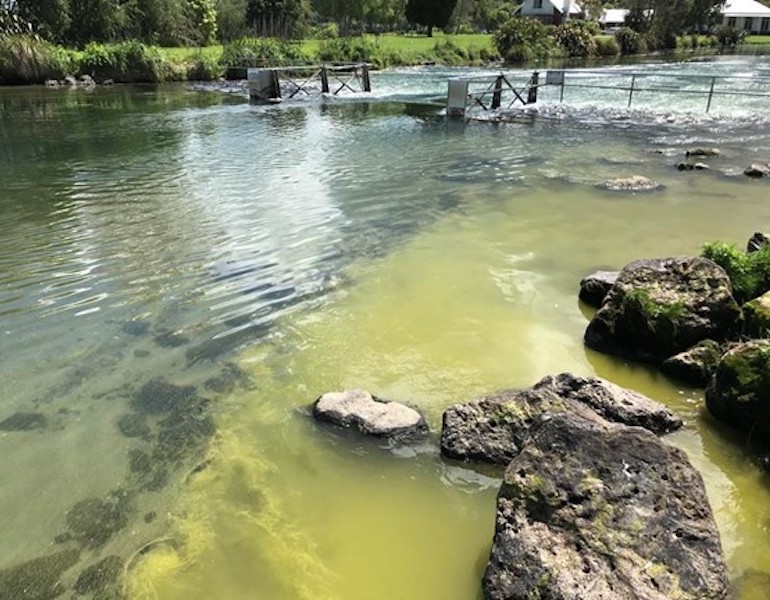
Taking Taonga Species Controlled
October 12, 2020
Burning Rules Have Changed
October 25, 202023 October 2020
BoPRC advise that the combination of the recent warmer temperatures and an out of action dosing plant has likely contributed to a potentially toxic algae bloom in Lake Rotorua. Sightings near Holden’s Bay, the Ohau channel, and Awahou river have confirmed the presence of this bloom also referred to as cyanobacteria.
Bay of Plenty Regional Council Rotorua Catchments Manager Helen Creagh said people should take care if they are fishing for trout near the affected locations and follow advice from Toi Te Ora Public Health around whether it is safe to swim in the lake.
“At this point, we would advise the community to avoid fishing for trout near the affected locations,” Ms Creagh said.
Cyanobacteria (also known as blue-green algae) are a natural occurrence, but can form blooms in response to warmer temperatures and excess available nutrients. Some species produce toxins as they die, which may cause illness in humans and pets who drink or swim in affected water. Symptoms range from nausea and diarrhoea, to more serious conditions such as liver damage.
Bay of Plenty Regional Council manage two alum dosing plants, located near the Utuhina and Puarenga streams. Maintenance work is currently taking place on the Puarenga plant. So far, the dosing plants have been successful at improving water quality in Lake Rotorua.
More information is available on the BoPRC web site here.


